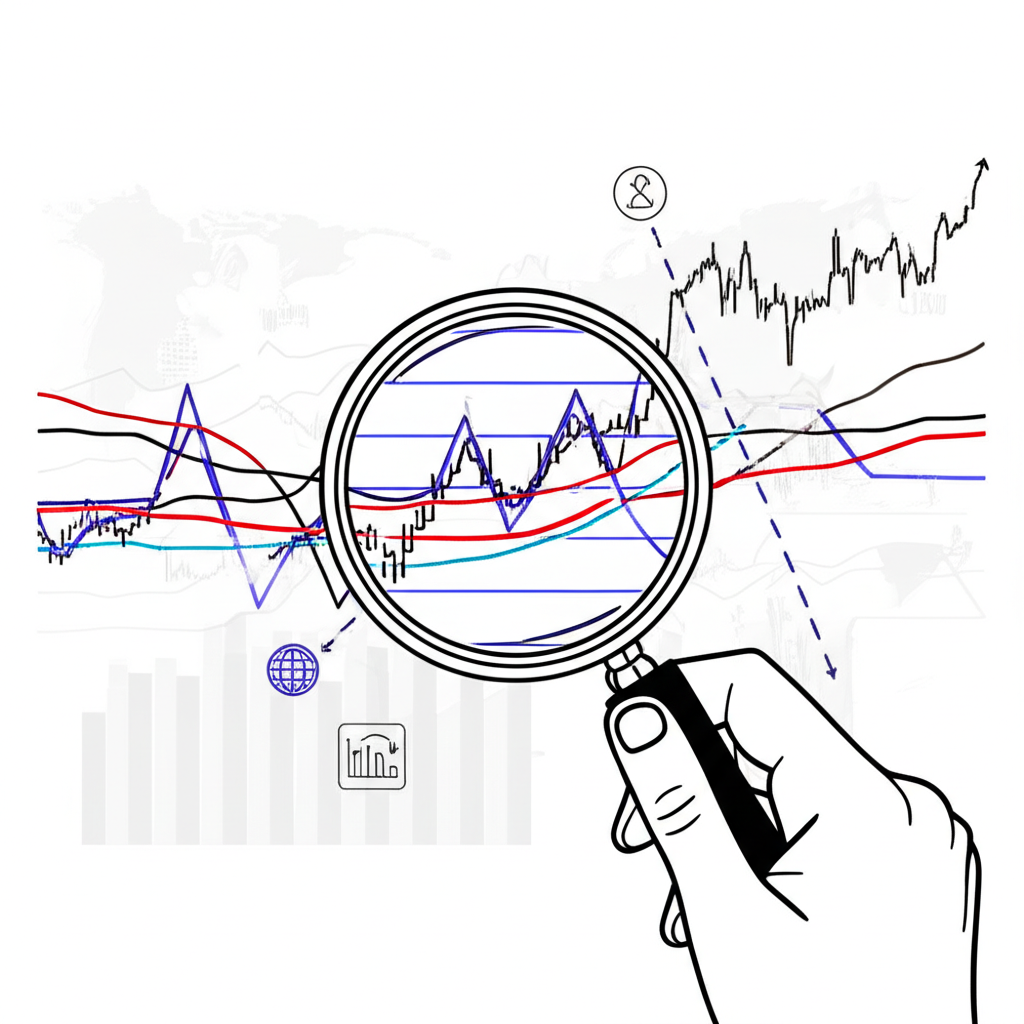Understanding Cannabis CFD Trading: What You Need to Know

The cannabis industry is riding a powerful wave of transformation—fueled by shifting laws, growing public acceptance, and rapid innovation. Often referred to as the “green wave,” this sector has evolved from a niche market into a high-stakes financial frontier. For traders seeking exposure without the burden of owning physical shares, Contracts for Difference (CFDs) present a strategic alternative. With cannabis CFDs, you can speculate on price movements of cannabis-related stocks or indices, tapping into market momentum while avoiding the logistical and capital-intensive aspects of direct ownership. While the potential for outsized returns is real, so too are the risks—especially in a market defined by unpredictability and regulatory flux.
What is a Contract for Difference (CFD)?

A Contract for Difference (CFD) is a derivative instrument that enables traders to bet on the price direction of various financial assets—such as stocks, indices, commodities, or currencies—without actually owning them. When you open a CFD position, you’re agreeing with a broker to exchange the difference in an asset’s price from the moment the trade opens to when it closes. This structure offers several advantages: access to leverage, the ability to profit in both rising and falling markets, and lower upfront capital requirements compared to traditional investing. However, because leverage amplifies both gains and losses, the same mechanism that can boost profits can also lead to steep drawdowns if the market moves against you.
The Booming Cannabis Market: Why It Attracts Traders

The global legal marijuana market was valued at USD 17.7 billion in 2023 and is projected to expand at a compound annual growth rate (CAGR) of 25.4% through 2030, according to Grand View Research. This explosive growth stems from progressive legalization across regions like North America, Europe, and parts of Latin America, along with rising demand for medical cannabis and wellness-infused products. Innovations in edibles, topicals, and cannabinoid-based pharmaceuticals are further diversifying revenue streams. Yet, for all its promise, the cannabis sector remains highly volatile. Regulatory reversals, delayed legislation, or underwhelming earnings reports can trigger dramatic price swings—conditions that, while risky, create fertile ground for CFD traders who thrive on market movement.
Benefits of Trading Cannabis CFDs

For those aiming to participate in the cannabis market’s momentum without the constraints of traditional investing, CFDs offer a flexible and responsive solution. The structure aligns well with fast-moving sectors where timing and agility matter.
Leverage and Margin: Magnifying Returns (and Risks)
Leverage is one of the most powerful tools in a CFD trader’s arsenal. It allows you to control a significantly larger position than your initial capital would otherwise permit. For example, with a 1:20 leverage ratio, a $1,000 deposit can open a $20,000 position. This amplification can turn modest market movements into substantial gains. But leverage is inherently two-sided: losses are magnified just as dramatically. A small adverse shift can erase your margin quickly—sometimes exceeding your original investment. As such, leverage demands discipline, clear risk parameters, and a deep understanding of margin calls and position sizing.
Profiting from Both Rising and Falling Markets
Unlike traditional stock ownership, which profits primarily when prices go up, CFD trading lets you take either a long or short position. Going long means buying in anticipation of price increases; going short allows you to sell high and buy back low if you expect a decline. This flexibility is particularly useful in the cannabis space, where sentiment can pivot overnight due to regulatory updates, clinical trial results, or macroeconomic shifts. The ability to short-sell transforms downturns into potential opportunities, giving traders a strategic edge in navigating turbulent conditions.
Risks and Challenges of Cannabis CFD Trading
While the allure of high returns is compelling, the cannabis CFD market is not for the faint-hearted. It combines the inherent risks of leveraged trading with the instability of a young, heavily regulated industry.
The Double-Edged Sword of Leverage
Leverage can dramatically enhance your buying power, but it also increases exposure to market swings. A seemingly minor correction—say, a 5% drop in a stock—can translate into a 100% loss on a highly leveraged position. Without stop-loss orders or strict risk controls, traders may find themselves facing margin calls or unexpected liquidations. The key is not to avoid leverage entirely, but to use it judiciously, ensuring that position sizes align with your overall risk tolerance and account size.
Regulatory Hurdles and Market Volatility in the Cannabis Sector
The legal status of cannabis varies widely across countries and even within states or provinces, creating a patchwork of compliance requirements. Federal legalization in major markets like the U.S. remains uncertain, and policy changes—such as tax reforms, licensing restrictions, or export bans—can send shockwaves through stock prices. For instance, a sudden announcement delaying national legalization could trigger a sector-wide sell-off. Conversely, a favorable ruling or international expansion deal might spark a rally. This regulatory unpredictability, combined with the financial instability of many emerging cannabis firms, makes the market prone to sharp, erratic movements that challenge even experienced traders.
How to Start Trading Cannabis CFDs: A Step-by-Step Guide
Entering the world of cannabis CFD trading involves more than just placing a bet—it requires preparation, research, and the right tools. Here’s how to get started the right way.
Choosing the Right CFD Broker for Cannabis
Not all brokers are created equal, especially when it comes to niche markets like cannabis. Selecting a trustworthy provider is critical for security, execution quality, and access to relevant instruments. Consider these factors:
- Regulation: Opt for brokers regulated by respected authorities such as the UK’s Financial Conduct Authority (FCA), Cyprus Securities and Exchange Commission (CySEC), or Australia’s ASIC. Regulatory oversight helps protect your funds and ensures transparent practices.
- Available Assets: Confirm that the broker offers CFDs on key cannabis stocks like Canopy Growth or Tilray, as well as relevant indices like the North American Cannabis Index (NACI).
- Platform Features: Look for intuitive trading platforms with real-time charts, technical indicators, news feeds, and mobile compatibility to support informed decision-making.
- Spreads and Fees: Compare bid-ask spreads, overnight financing charges, and commission structures. Tight spreads can reduce trading costs, especially for active traders.
- Customer Support: Reliable, responsive support can make a difference during volatile market events or technical issues.
- Demo Account: A practice account with virtual funds allows you to test strategies, learn the platform, and build confidence before risking real money.
Opening and Funding Your Trading Account
Once you’ve chosen a broker, the next steps are straightforward but essential:
- Registration: Complete an online application with your personal details, including contact information and employment status.
- Verification: Submit identification documents (e.g., passport or driver’s license) and proof of address to meet anti-money laundering (AML) and KYC requirements.
- Funding: Deposit funds via bank transfer, credit/debit card, or e-wallets like Skrill or Neteller. Be aware of minimum deposit thresholds and processing times.
After funding, you’re ready to explore the platform and begin planning your first trade.
Top Cannabis Stocks and Indices for CFD Trading
For traders looking to gain exposure to the cannabis sector, several well-known companies and indices serve as popular entry points.
Leading Cannabis Companies to Watch
These major players frequently attract investor attention and are commonly available as CFDs:
- Canopy Growth Corporation (CGC): One of Canada’s largest cannabis companies, with a diversified portfolio spanning medical, recreational, and international markets. Its partnerships with major beverage and pharmaceutical firms add strategic depth.
- Tilray Brands, Inc. (TLRY): Formed through the merger of Tilray and Aphria, this global leader operates in over 20 countries, with strong footholds in medical cannabis, craft cultivation, and hemp-derived wellness products.
- Aurora Cannabis Inc. (ACB): Known for its large-scale production facilities and focus on medical cannabis, Aurora has expanded into European and Latin American markets, though it has faced profitability challenges in recent years.
- Cronos Group Inc. (CRON): Backed by Altria Group, Cronos emphasizes innovation through investments in cannabinoid research and next-generation delivery systems, including biosynthesis technology.
These stocks often experience high volatility, making them attractive to CFD traders who monitor news catalysts closely.
Cannabis Market Indices: Diversifying Your CFD Portfolio
Instead of betting on a single company, trading cannabis indices provides broader exposure and helps spread risk:
- North American Cannabis Index (NACI): Tracks the performance of leading publicly traded cannabis companies in the U.S. and Canada, offering a macro view of sector health.
- AdvisorShares Pure US Cannabis ETF (MSOS): While technically an ETF, many CFD brokers offer derivative contracts based on MSOS, giving traders access to U.S. multi-state operators without direct ownership.
By trading an index, you reduce reliance on any one company’s performance and instead capture broader industry trends, which can be especially useful during periods of regulatory speculation or macroeconomic uncertainty.
Advanced Strategies and Responsible Trading in Cannabis CFDs
Successful CFD trading goes beyond intuition—it requires a structured approach grounded in analysis, discipline, and emotional control.
Technical vs. Fundamental Analysis for Cannabis CFDs
Two primary analytical methods guide trading decisions:
- Fundamental Analysis: This involves assessing the underlying value of a cannabis asset by examining regulatory developments, earnings reports, product pipelines, partnerships, and broader industry trends. For example, news that a state has approved recreational cannabis could significantly boost related stocks. Similarly, FDA approval for a cannabinoid-based drug might serve as a long-term bullish catalyst.
- Technical Analysis: This method focuses on historical price data and trading volume to identify patterns and forecast future movements. Tools like moving averages, Relative Strength Index (RSI), and MACD help traders spot trends, support/resistance levels, and potential reversals. Given the speculative nature of cannabis stocks, technical indicators are often essential for timing entries and exits.
Many seasoned traders combine both approaches: using fundamentals to determine *what* to trade and technicals to decide *when* to enter or exit. This hybrid strategy enhances accuracy and aligns trades with both market sentiment and price action.
Is CFD Trading Gambling? A Responsible Approach
The line between trading and gambling is often blurred, especially with volatile assets like cannabis CFDs. But the distinction lies in methodology. Gambling relies on chance and emotion; responsible trading is built on research, strategy, and risk control. While no outcome is guaranteed, informed traders use data, set predefined rules, and manage exposure to make calculated decisions. To ensure your activity remains disciplined rather than speculative:
- Education: Continuously learn about market mechanics, economic drivers, and trading psychology.
- Strategy: Develop a clear trading plan outlining entry/exit rules, position sizing, and goals.
- Risk Management: Always use stop-loss orders, limit leverage, and avoid over-concentration in a single asset.
- Emotional Discipline: Stick to your plan even during market swings. Fear and greed are common pitfalls that lead to impulsive trades.
Treating CFD trading as a skill-based endeavor—not a lottery—helps separate long-term success from short-term losses.
Understanding the Underlying Cannabis Industry: Beyond Stock Prices
To make informed trading decisions, it helps to look beyond the charts and understand the real-world operations driving the sector. Factors such as cultivation efficiency, supply chain logistics, and distribution networks play a crucial role in a company’s profitability. For example, platforms like GrowGeneration, which supplies equipment and nutrients to cultivators, highlight the importance of agricultural infrastructure. Similarly, B2B marketplaces such as Apex Trading or Leaf Trade streamline transactions between growers, processors, and dispensaries—reducing costs and improving margins. Regulatory licensing, packaging regulations, and shifting consumer preferences (like the move from dried flower to vapes and edibles) also influence company performance. A trader who grasps these dynamics gains a deeper insight into which stocks may outperform or underperform based on operational strength, not just headlines.
Conclusion: Navigating the Green Wave with Confidence
Cannabis CFD trading sits at the intersection of innovation, regulation, and financial opportunity. The sector’s rapid growth, combined with the flexibility of CFDs, offers a compelling way to engage with market movements without owning physical shares. Leverage, short-selling, and global access empower traders to respond quickly to news and trends. Yet, these advantages come with elevated risks—especially from volatility, regulatory uncertainty, and the dangers of unchecked leverage. Lasting success depends on more than luck; it requires a disciplined framework that blends fundamental and technical analysis with strict risk management. By choosing a regulated broker, practicing with a demo account, staying informed about industry developments, and treating trading as a strategic pursuit, investors can approach the green wave not with speculation, but with confidence and clarity.
1. Is CFD trading gambling, especially with volatile assets like cannabis?
No, responsible CFD trading is not gambling. While both involve risk, trading is based on analysis, strategy, and risk management, aiming for calculated speculation. Gambling relies purely on chance. Traders use market data, economic indicators, and technical analysis to make informed decisions, unlike random bets.
2. What are the primary differences between trading cannabis CFDs and buying actual cannabis stocks?
Key differences include:
- Ownership: With CFDs, you don’t own the underlying stock; you speculate on its price movement. Buying stocks means you own a share of the company.
- Leverage: CFDs typically offer leverage, amplifying both potential gains and losses. Direct stock purchases usually require full capital.
- Short Selling: CFDs make it easier to profit from falling prices (short selling). Shorting actual stocks can be more complex.
- Costs: CFDs involve spreads, overnight funding costs, and sometimes commissions. Stock purchases involve brokerage fees and potentially stamp duty.
3. Which major cannabis companies or indices are commonly available for CFD trading?
Major cannabis companies often available for CFD trading include Canopy Growth Corporation (CGC), Tilray Brands, Inc. (TLRY), Aurora Cannabis Inc. (ACB), and Cronos Group Inc. (CRON). For broader exposure, some brokers offer CFDs on cannabis-related indices or ETFs like the North American Cannabis Index (NACI) or the AdvisorShares Pure US Cannabis ETF (MSOS).
4. How does the regulatory landscape of cannabis in different countries affect CFD trading opportunities?
The regulatory landscape significantly impacts cannabis stock prices and, consequently, CFD trading opportunities. Positive regulatory developments (e.g., new legalization, relaxed restrictions) can lead to price surges, while negative news (e.g., delays, increased

留言